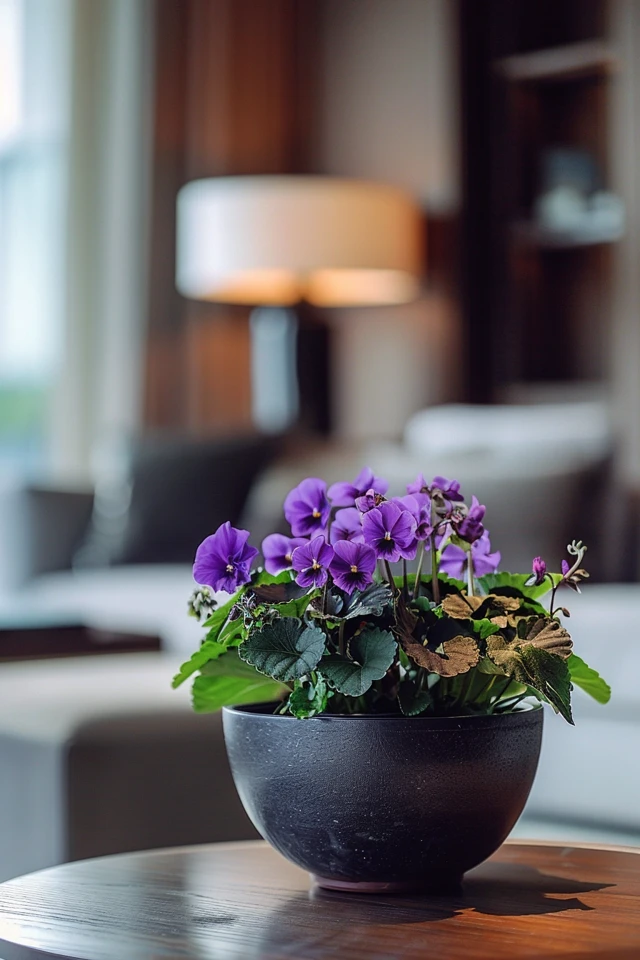Hi there! Welcome to my article on African violet pots and how they can contribute to the optimal health and growth of your plants. African violets are beautiful flowering plants that can add a touch of elegance to any indoor space.
African violets, scientifically known as Saintpaulia ionantha, have a rich history dating back to their discovery in Tanzania by Baron Walter von Saint Paul in 1892. Since then, they have become a popular choice among plant enthusiasts worldwide.
These plants belong to the Gesneriaceae family, which includes other well-loved flowering plants like Streptocarpus and Gloxinia. Through hybridization, African violets have evolved to showcase a stunning array of flower colors, leaf shapes, and sizes. From pink and white to mauve and bicolor blooms, African violets offer a delightful range of options to suit various preferences.
Standard African violets typically reach a size of 8-12 inches, while miniature varieties stay around 4 inches wide. Their compact nature makes them an ideal choice for small spaces or as a vibrant addition to any plant collection.
Key Takeaways:
- African violets belong to the Gesneriaceae family and come in a variety of flower colors, leaf shapes, and sizes.
- Standard African violets grow to about 8-12 inches in size, while miniature varieties stay around 4 inches wide.

Light, Watering, and Temperature Requirements for African Violets
African violets have specific requirements when it comes to light, watering, and temperature. Providing the right conditions is essential for their optimal growth and to ensure they thrive.
Light:
African violets prefer moderate to bright, indirect indoor light. They should be placed in a location that receives 10-12 hours of strong light each day. If natural sunlight is limited, artificial light can be just as effective, especially during the winter months. Position a pair of 40-watt fluorescent lights 8-12 inches above the plants to provide the necessary light intensity.
Watering:
Proper watering is crucial for the health of African violets. They should be watered thoroughly, but avoid overwatering as it can lead to root rot. Water the plants when the top inch of soil feels dry to the touch. Be sure to use room-temperature water and avoid getting water on the leaves, as this can cause spotting or fungal issues. Using a self-watering pot or placing the pot on a tray with pebbles and water can help maintain proper humidity levels.
Temperature:
African violets prefer a temperature range of 65-75°F (18-24°C). Avoid exposing them to extreme temperature fluctuations, drafts, or direct heat sources. Cold air can cause their leaves to develop spots or grayish patches, while hot air can lead to wilting. Keep them away from windows during the winter to avoid cold air exposure.
Providing the right amount of light, proper watering, and maintaining a suitable temperature are key factors in keeping African violets healthy and thriving.
In the next section, we will explore the potting and soil requirements, fertilization, and additional care tips that will help you nurture your African violets with success.

Potting and Soil, Fertilizing, and Additional Care Tips for African Violets
When it comes to the optimal growth of African violets, the right potting and soil mix are crucial. These delicate plants prefer to be slightly rootbound, so it’s important to choose a container with a diameter that is no more than one-third the width of the plant’s leaf span. This will provide them with the right amount of space to thrive.
For the soil mix, a combination of equal parts peat, perlite, and vermiculite is highly recommended. This mixture provides excellent drainage and aeration to prevent waterlogged roots and promote healthy growth. To achieve the ideal pH balance between 6.0 and 7.0, the addition of dolomite lime is beneficial.
If you prefer a hassle-free option, specialized soil mixes specifically formulated for African violets can be found at your local garden centers. These pre-mixed soils take the guesswork out of creating the perfect blend and ensure your plants have the ideal growing conditions.
In addition to potting and soil, fertilizing is an essential aspect of caring for African violets. These plants benefit from a gentle feeding regimen, using a balanced water-soluble fertilizer diluted to half the recommended strength. Apply the fertilizer every 2 to 4 weeks, always following the instructions provided by the manufacturer.
Additional care tips for African violets include maintaining a stable temperature around 70-75°F (21-24°C) during the day and slightly cooler temperatures at night. Avoid exposing the plants to drafts or sudden temperature fluctuations, as they can lead to stress and damage.
With proper potting, soil, and regular care, your African violets will flourish and reward you with their beautiful blooms and vibrant foliage.


